Integration of Autonomous Wireless Sensor Networks in Academic School Gardens †
Abstract
:1. Introduction
2. Experiments and Results
4. Application Design and System Validation
5. Conclusions
Acknowledgments
Author Contributions
Conflicts of Interest
References
- Angelopoulos, C.M. A Smart System for Garden Watering using Wireless Sensor Network. In Proceedings of the 9th ACM International Symppsium on Mobility Management and Wireless Access, New York, NY, USA, 31 October–4 November 2011; pp. 167–170. [Google Scholar]
- Abbas, A.H.; Mohammed, M.M.; Ahmed, G.M.; Ahmed, E.A.; Seoud, R.A.A.A.A. Smart Watering System for Gardens using Wireless Sensor Networks. In Proceedings of the International Conference on Engineering and Technology (ICET), Cairo, Egypt, 19–20 April 2014; pp. 1–5. [Google Scholar]
- Sesma, I.; Azpilicueta, L.; Astrain, J.J.; Villadangos, J.; Falcone, F. Analysis of challenges in the application of deterministic wireless channel modelling in the implementation of WLAN-based indoor location system in large complex scenarios. Int. J. Ad Hoc Ubiquitous Comput. 2014, 15, 171–184. [Google Scholar] [CrossRef]
- Granda, F.; Azpilicueta, L.; Vargas-Rosales, C.; Lopez-Iturri, P.; Aguirre, E.; Astrain, J.J.; Villadangos, J.; Falcone, F. Spatial Characterization of Radio Propagation Channel in Urban Vehicle-to-Infrastructure Environments to Support WSNs Deployment. Sensors 2017, 17, 1313. [Google Scholar] [CrossRef] [PubMed]
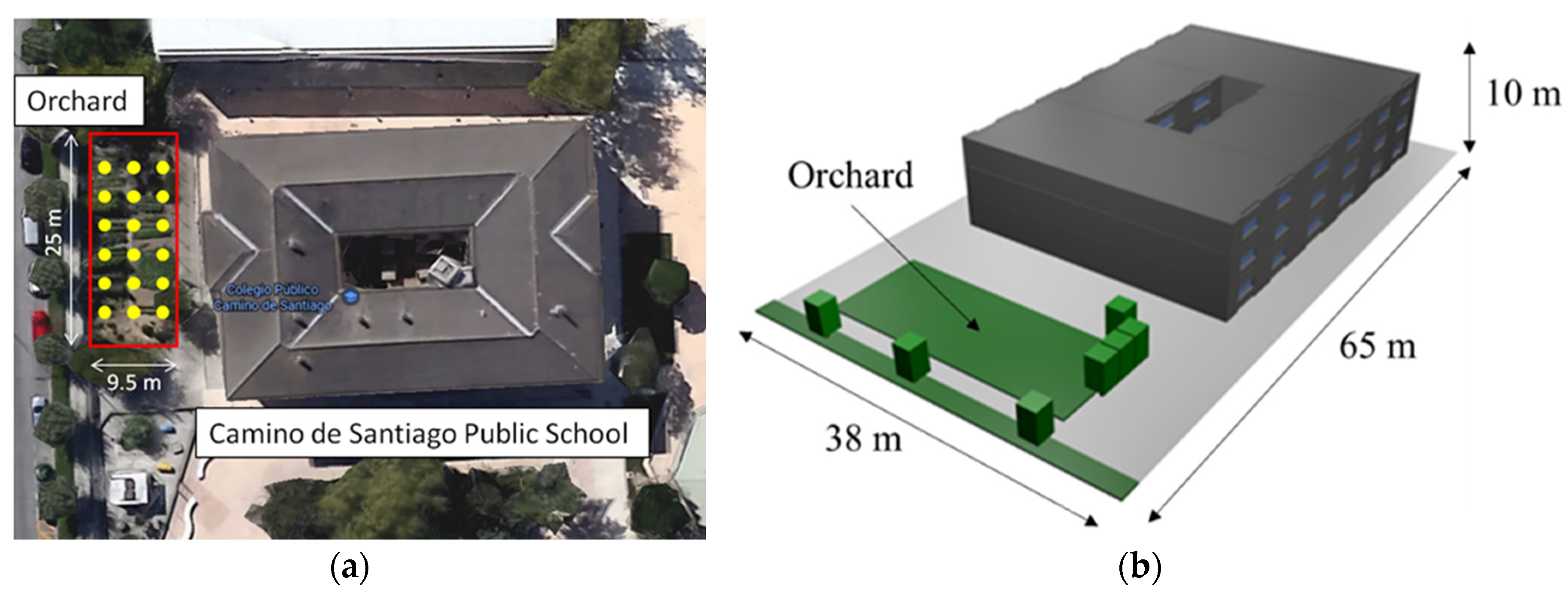
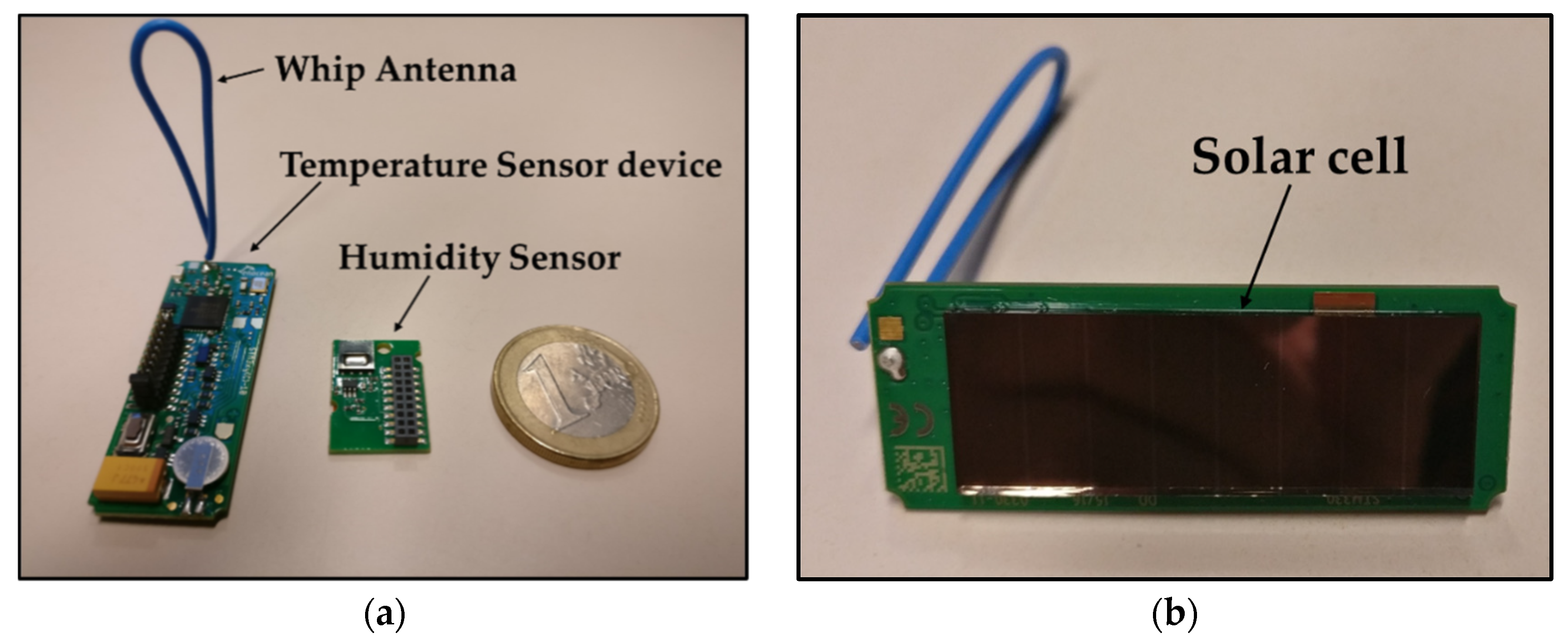

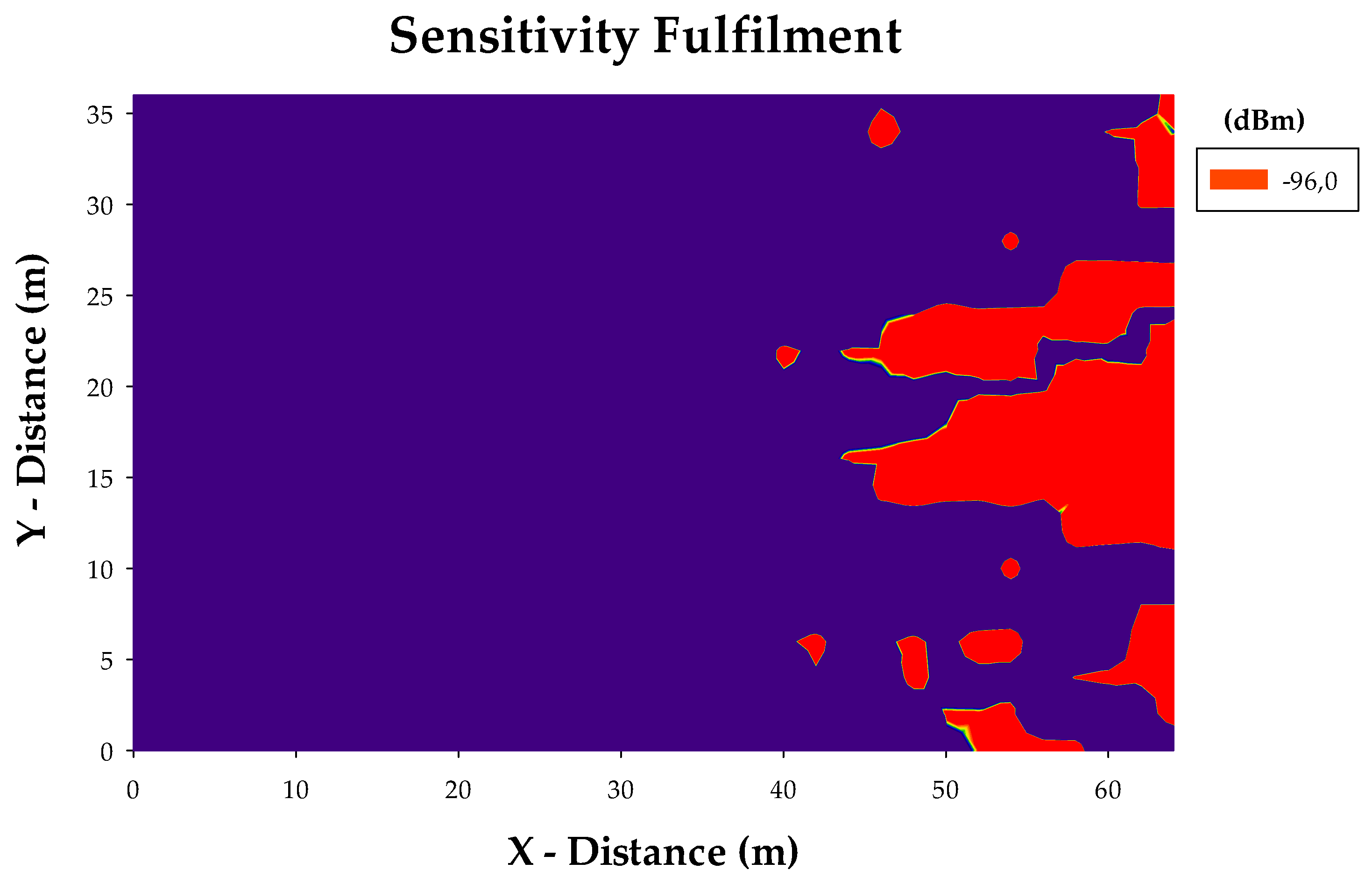
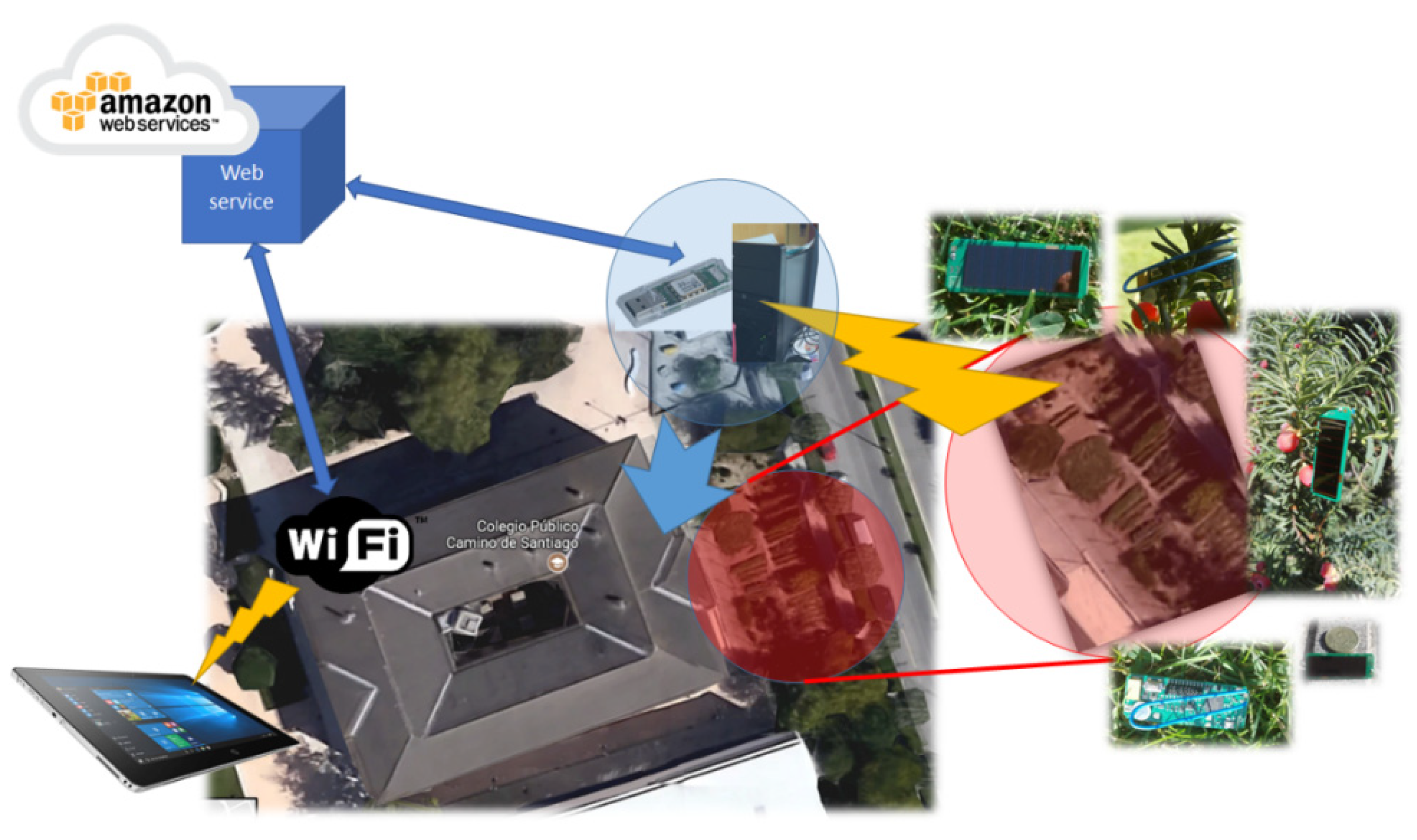
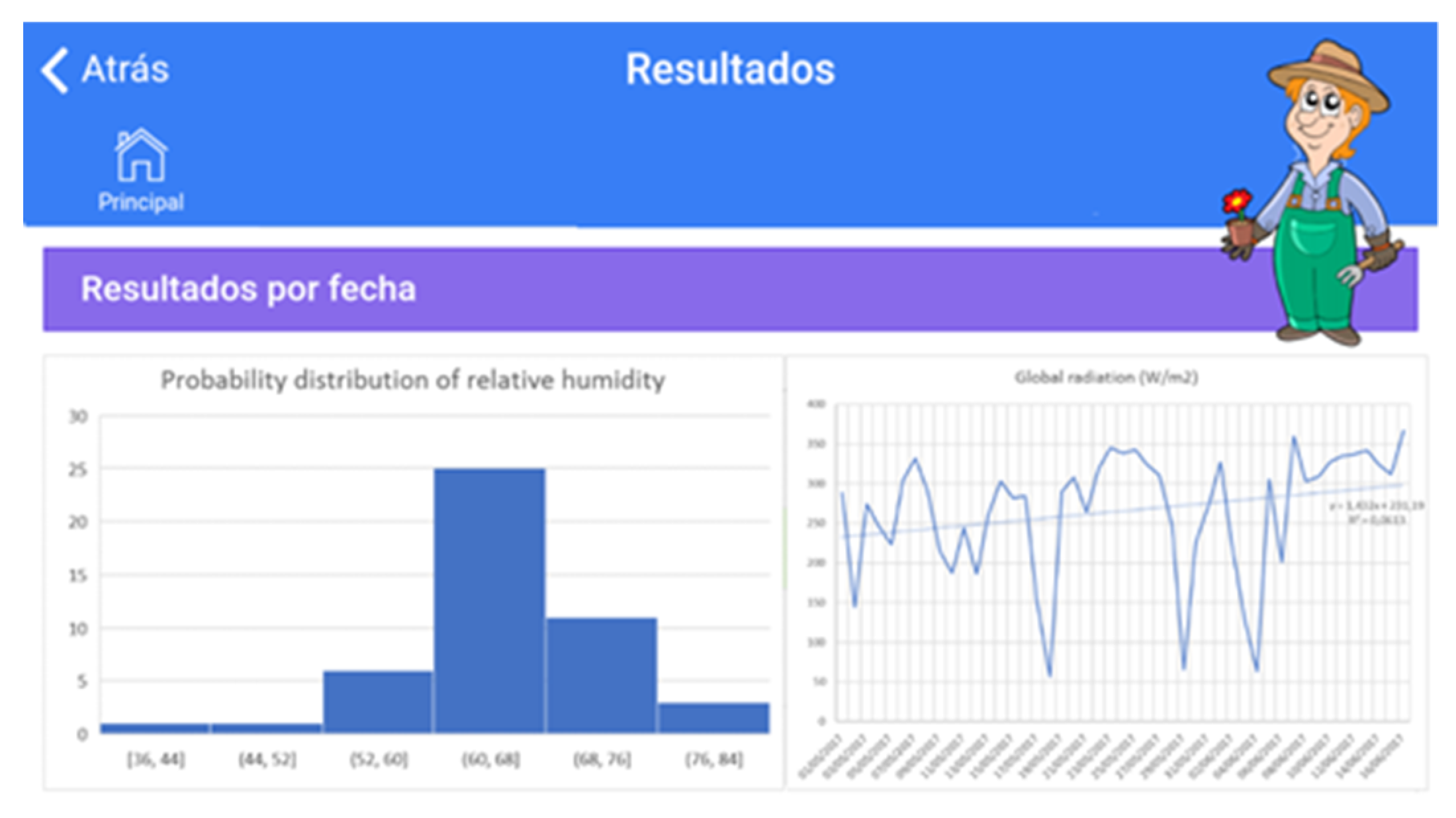
| Parameter | Value |
|---|---|
| Operation frequency | 868.3 MHz |
| Output power level | 8 dBm |
| Permitted reflections | 6 |
| Cuboid resolution | 2 m × 2 m × 2 m |
| Launched Rays resolution | 1° |
| Data rate | 125 kbps |
Publisher’s Note: MDPI stays neutral with regard to jurisdictional claims in published maps and institutional affiliations. |
© 2018 by the authors. Licensee MDPI, Basel, Switzerland. This article is an open access article distributed under the terms and conditions of the Creative Commons Attribution (CC BY) license (https://creativecommons.org/licenses/by/4.0/).
Share and Cite
Lopez-Iturri, P.; Aguirre, E.; Astrain, J.J.; Azpilicueta, L.; Villadangos, J.; Falcone, F. Integration of Autonomous Wireless Sensor Networks in Academic School Gardens. Proceedings 2018, 2, 108. https://doi.org/10.3390/ecsa-4-04899
Lopez-Iturri P, Aguirre E, Astrain JJ, Azpilicueta L, Villadangos J, Falcone F. Integration of Autonomous Wireless Sensor Networks in Academic School Gardens. Proceedings. 2018; 2(3):108. https://doi.org/10.3390/ecsa-4-04899
Chicago/Turabian StyleLopez-Iturri, Peio, Erik Aguirre, Jose J. Astrain, Leyre Azpilicueta, Jesús Villadangos, and Francisco Falcone. 2018. "Integration of Autonomous Wireless Sensor Networks in Academic School Gardens" Proceedings 2, no. 3: 108. https://doi.org/10.3390/ecsa-4-04899
APA StyleLopez-Iturri, P., Aguirre, E., Astrain, J. J., Azpilicueta, L., Villadangos, J., & Falcone, F. (2018). Integration of Autonomous Wireless Sensor Networks in Academic School Gardens. Proceedings, 2(3), 108. https://doi.org/10.3390/ecsa-4-04899










